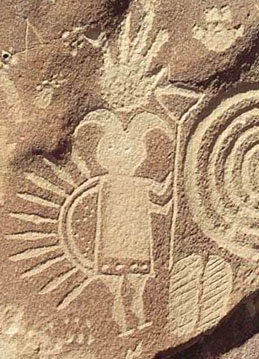
Historians tell us that the Vikings were the first Europeans to land in North America in AD 1001. They traded with the Native peoples but they left after a few years.
However the earliest human record in North America dates from 28,000 BC. These early settlers left hearth charcoal on Santa Rosa Island off the coast of California. These early inhabitants followed different migration routes along the coast of California, and inland into Central and South America. The same traces dating from the same time were also found in Brazil.
The Native American population reached its peak in 1,300 AD. It is estimated that 30 million people lived in Mexico, 12 to 15 million in North America and over 20 million in South America. The Native population declined during the fourteenth century. At that time there was the Black Death in Europe and a similar disease (or plague) could have decimated them too.
Great internal migrations and changes occurred even before the arrival of the white settlers. The Delaware migrated from west to east, the Mississippians moved southward, the Onondaga who lived in what is now upstate New York, began to change and the Apachean peoples separated into Navajo and Apache. The Navajo (a name given to them by the Spanish) called themselves Diné, or People of the Earth’s Surface, settled in land surrounded by four sacred mountains in New Mexico. The Navajo claimed this historic land, known as “Dinetah”. The Apache moved into the mountains of Arizona and New Mexico.

Be First to Comment